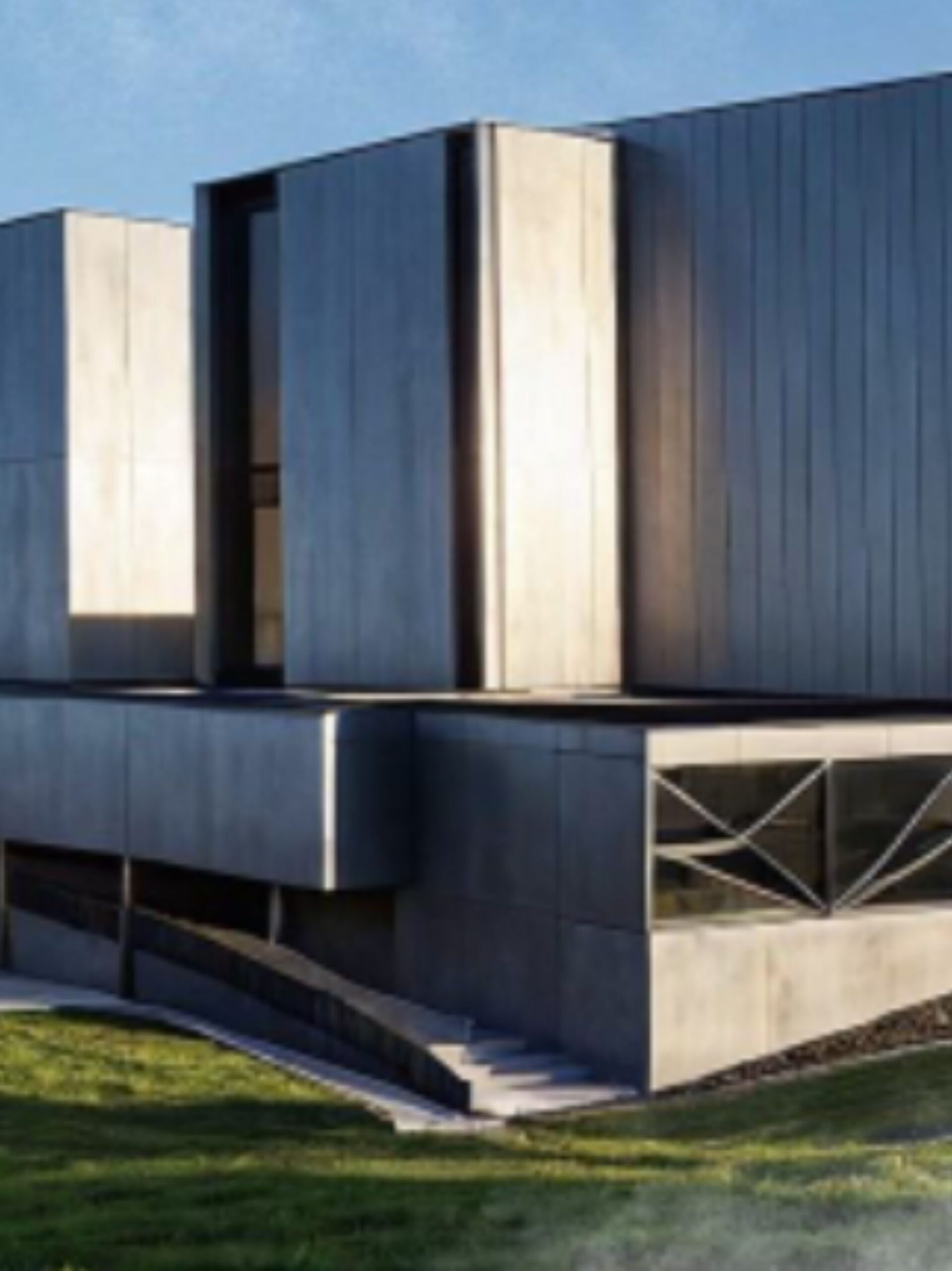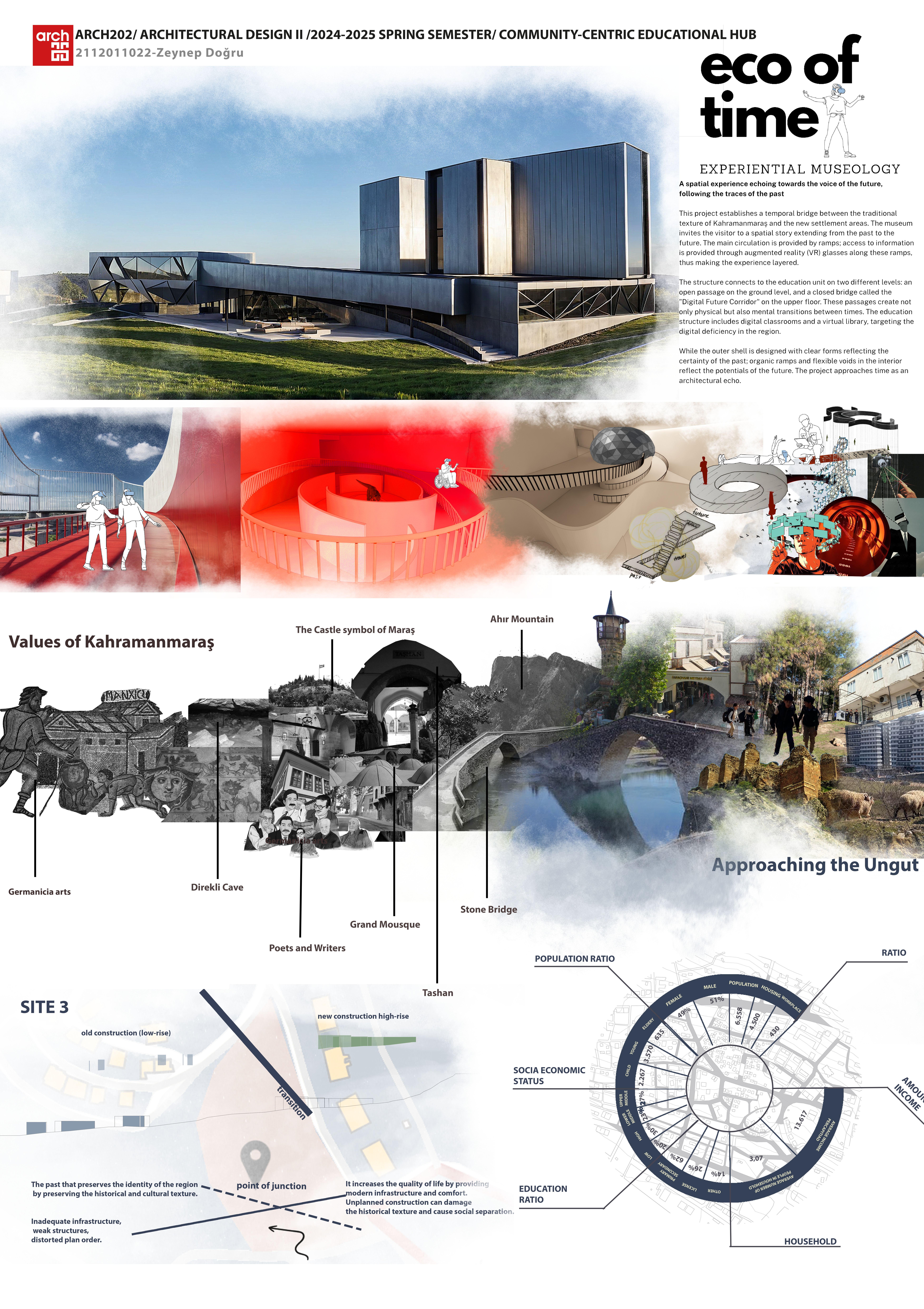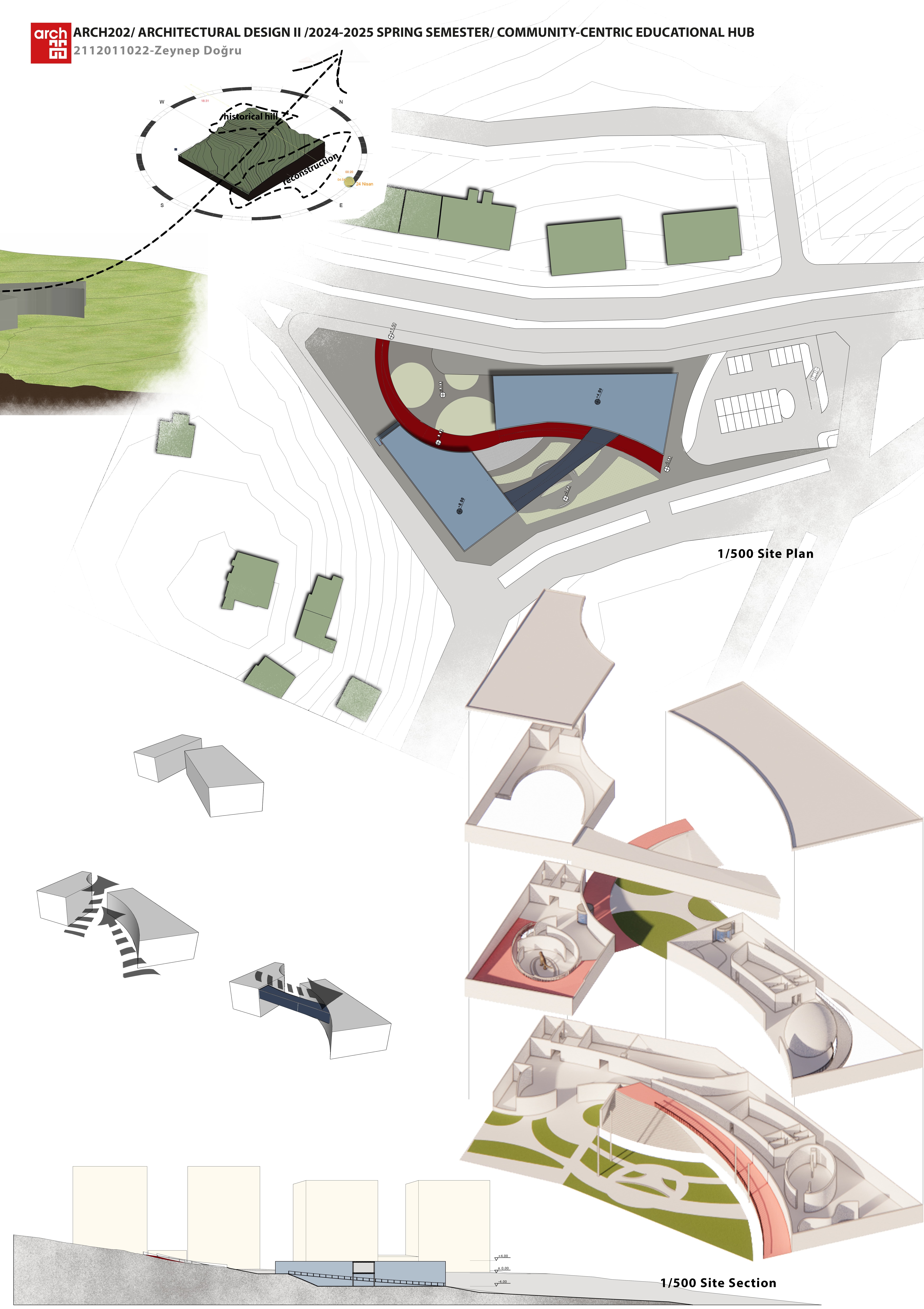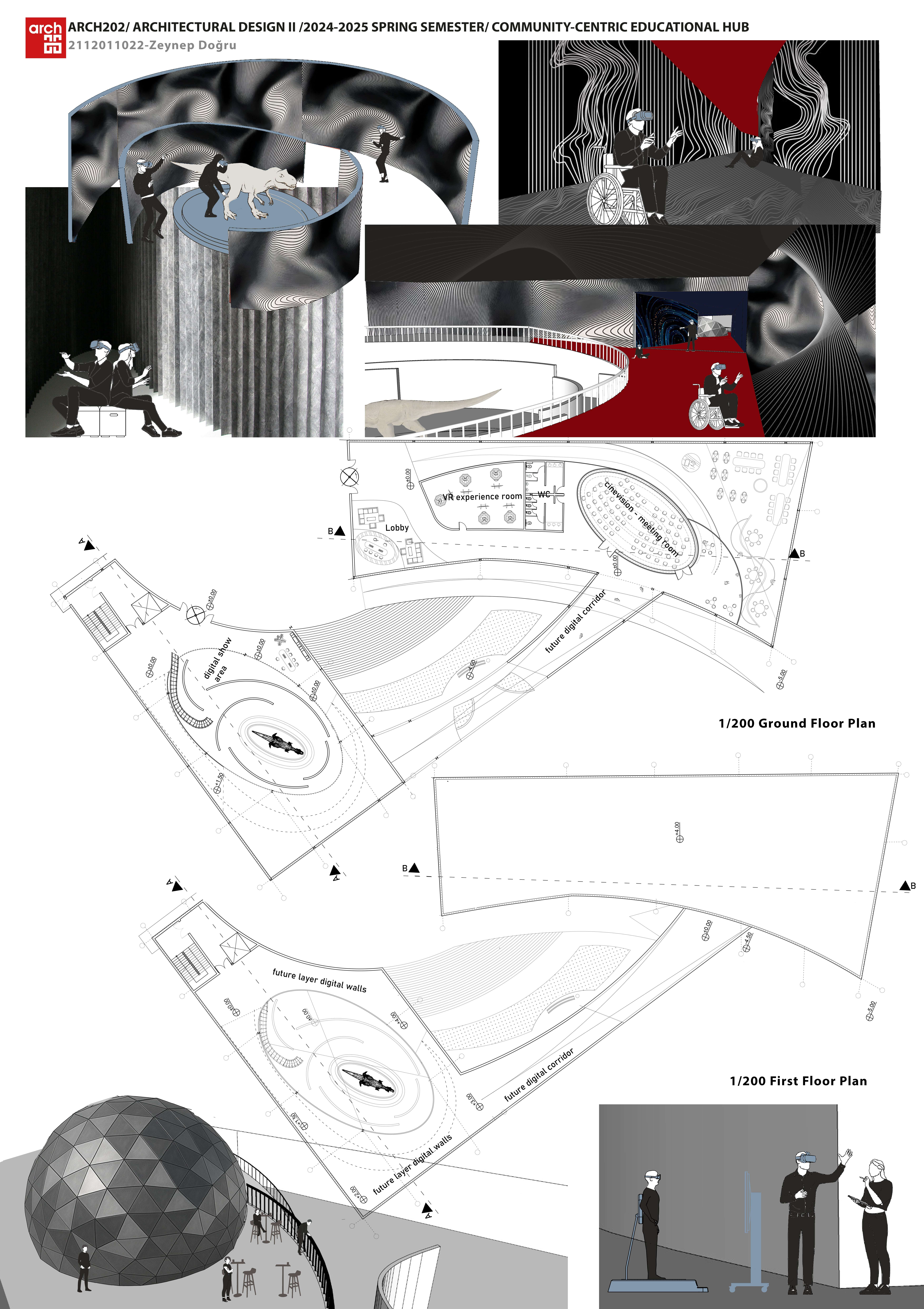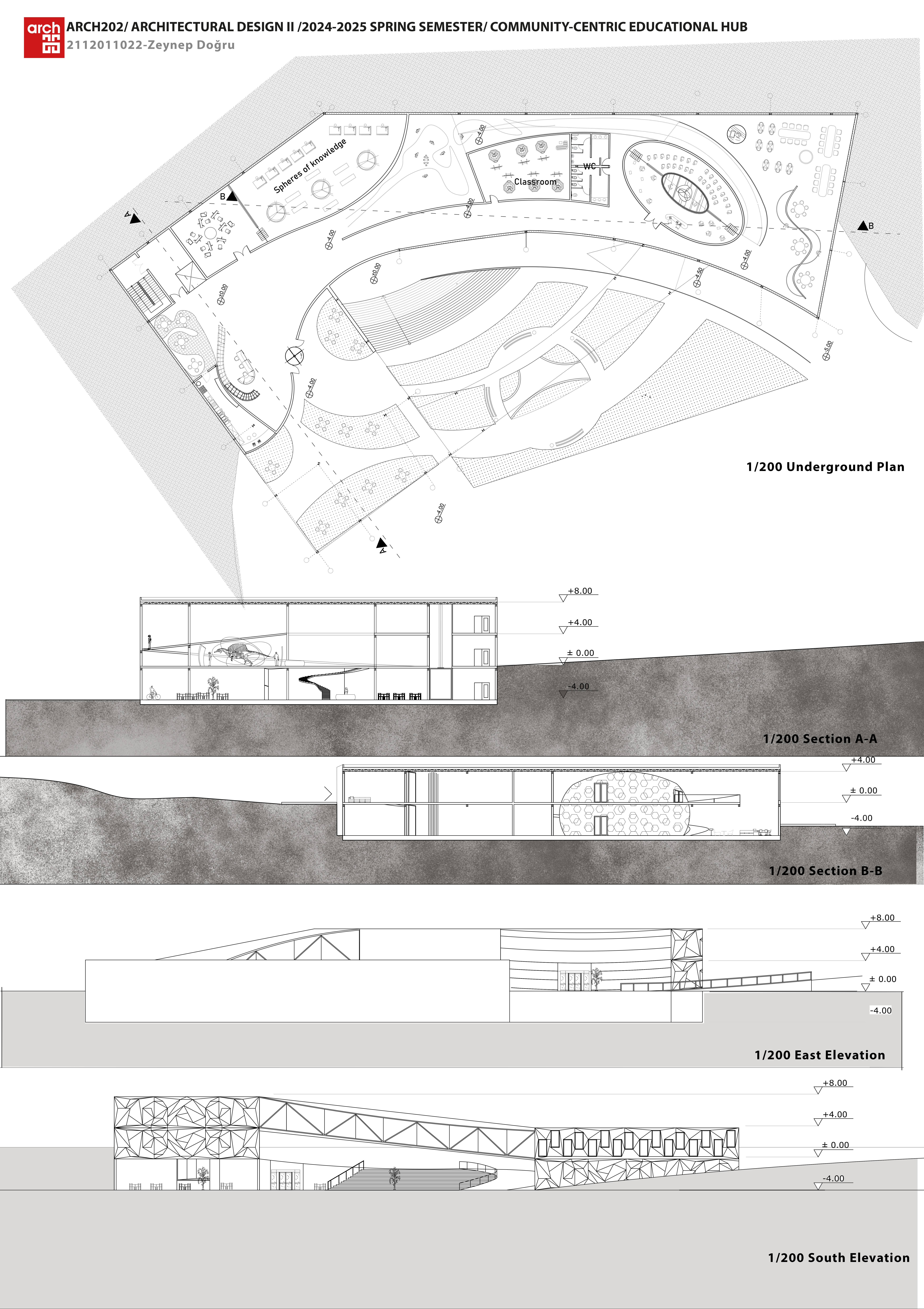ECHO OF TIME
A spatial experience that echoes in the footsteps of the past and towards the voice of the future
Located between the traditional housing texture of Kahramanmaraş and the developing new settlement areas, “Echo of Time” establishes a conceptual and physical bridge between two different temporalities. This experience museum and education hub spatially guides its visitors within a time structure extending from the past to the present and the future. The architecture of the structure aims to give meaning not only to circulation but also to time through space.
The main circulation is provided via ramps; access to information with augmented reality (VR) glasses on the surfaces placed along these ramps has a structure that constantly transforms the experience. These technological interfaces go beyond traditional exhibition forms and transform the perception of layers of time into experience. Each section represents a different time period, offering the visitor the opportunity to explore the past, live the present and foresee the future.
The structure is connected to educational units on two different levels. While the open passage at the ground level supports the continuity of the museum experience; The covered passage on the upper level—the “Digital Future Corridor”—is designed as the final point of the time structure. This bridge represents not only a spatial connection but also a mental transition from the past to the future as an architectural narrative element. These transitions established from different levels offer the visitor the opportunity to explore the structure not only horizontally but also vertically, making the experience multi-layered.
The education center, which is connected to the structure from two different points, offers contemporary learning opportunities through digital classrooms and a virtual library. Considering the lack of digital access in the region, this center becomes an accessible and interactive information area especially for children and young people. The connection established between the education unit and the museum represents an intellectual transfer along with spatial continuity.
The stability and structural precision of the past are emphasized architecturally by using clear and distinct geometric forms on the exterior. In contrast, organic curves, permeable surfaces and digitally transformable voids in the interior reflect the flexibility and multi-layered potential of the future. This architectural duality creates an experiential area where different faces of time resonate throughout the structure.
